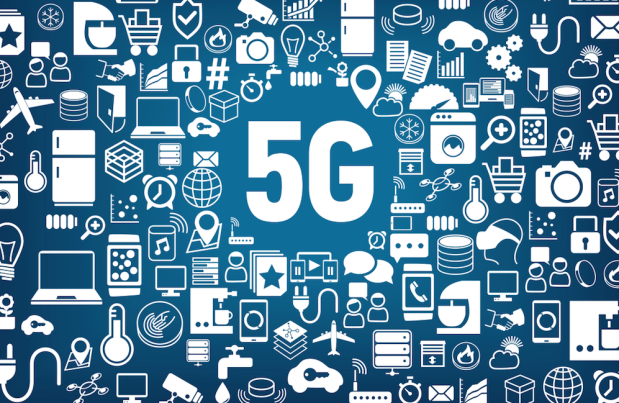Is 5G The Oxygen Connected Cars Need To Ignite?

The world is becoming an increasingly connected place such that internet connections aren’t just for phones and computers anymore – appliances, household systems, dog collars, hair brushes, cars and VR headsets are just a short sampling of the world of things looking for secure, consistent connections to the web.
By most estimates there are 6.3 billion such devices as of today – by Gartner’s estimate, that number will have exploded to over 20 billion worldwide by 2020.
The good news, notes Rob Topol, general manager of Intel’s 5G business and technology, is the various wonders that this level of connectivity between devices will make things possible in the future that were the wildest dreams of science fiction writers in the not-to-distant past. How we drive, how we shop, how we consume media, how businesses manage their factories – innovations in all of these areas are potential outgrowths of the era of the connected devices.
The more challenging news – will be the upgrades necessary to make sure those devices all have something to usefully connect to – because 4G LTE systems that are the current standard for connecting to the mobile web are not anywhere near sufficient to handle the bandwidth needs of the connect future. There will simply be far too much data, Topol noted.
Luckily, according to Intel (among others) 4G LTE is reaching the end of the line, set to be replaced, in surprisingly short order by 5G systems that Topol says will be the “oxygen” of the IoT and connect future.
The Need For Speed
On it’s very best day – 4G LTE transfer speeds top out at about one gigabit per second – and things like tall buildings can easily knock 4G LTE off peak.
That, Topol notes, is annoying on a smartphone – but could actually constitute a safety concern if the we are talking about a connected car that isn’t getting safety updates fast enough.
It is not exactly fair to blame 4G systems for this lacking – because in truth he said, those system did exactly what they needed to to power the era of the smartphone for the last decade or so. But 4G systems were not designed to handle a world with 20 billion connected devices pinging gigabytes of data between them every second of everyday.
“We have billions of connected things coming up all around us as where everything -refrigerator, cars, homes and enterprise networks all moving to get smarter —and that represents a staggering amount of data being pushed through network.”
And this, is where 5G networks – and their potential to move as many as 10 gigabytes of data per second – will be critical in making the potential of the connected future the reality of the connected present.
“We you look at the 5G modem chips we are working on at Intel right now – the goal is to design for an era beyond the smartphone. For connected cars – or really connected anything – to really catch-fire, it needs oxygen, so to speak, something to really feed the flame and make it possible for it to expand. That is what 5G networks will be – the oxygen that makes ignition possible across a lot of areas of connected innovation.”
And that “oxygen” Topol noted, will give the next generation of data transfers more room to “breath” beyond merely widening the data pipes to let more information get through. It allows to the network more control over how data flows by allowing more machine to machine communication directly, instead of requiring those devices communicate through a local access point or base station.
All in, Topol noted, the 5G upgrade will make it possible to really see what the full potential of a host of connect devices are – by making it possible to use them at their full, data crunching best.
“I think 5G will open up many new opportunities for business and consumers, primarily because of the data that’s coming off these smart and connected machines all around us. The ability to analyze, compute, and harvest that data is going to make us smarter in the way we lay out cities, set up factories, drive cars, conduct commerce and do other things around us.”
The Future, Known and Unknown
The most exciting part about developing 5G – in preparation for the incredibly more connect world that is on the way – according to Topol is not the things they expect are going to happen. Instead, he notes, it is the things they don’t yet know are going to happen, because they haven’t been enabled by a better 5G network yet.
“If you look back at LTE—the early days 10 years ago, my use cases might not include the smartphone yet. In 2007, smartphones were a bit of a novelty. Most of us still carried PDAs. Now after 10 years of developing touch, data, apps, media and shopping have completely changed the way we look at mobility and the power of something we can carry with us.”
That change, he believe, is coming from 5G – though we may not yet be able to see the full scope of the uses cases coming.
“We see a lot of promise for 5G in automotive. We see a lot of promise for smart home and enterprise, if you move networks more to a fixed wireless capability. We see a potentially completely changed way people are managing their home management – will people shop for groceries if their refrigerator does a better job of keeping track of what they need?”
But whatever the changes are – Intel says the world is getting ready, and while standards are still being written today – by 2020, when those 20 billion or so smart devices are up and running – the plan is to have 5G networks up and running with them.
“There’s a tremendous opportunity,” Topol noted.
